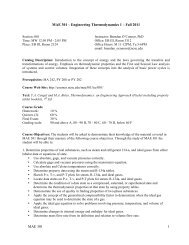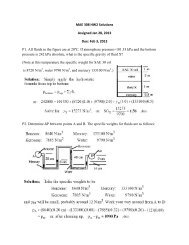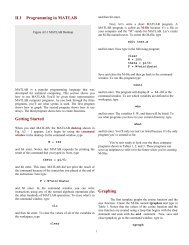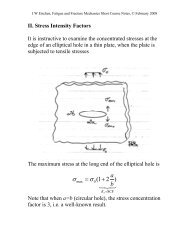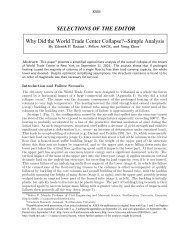The Online Ethics Center for Engineering & Science - Department of ...
The Online Ethics Center for Engineering & Science - Department of ...
The Online Ethics Center for Engineering & Science - Department of ...
Create successful ePaper yourself
Turn your PDF publications into a flip-book with our unique Google optimized e-Paper software.
<strong>Online</strong> <strong>Ethics</strong> <strong>Center</strong>: Background -- <strong>The</strong> History <strong>of</strong> SkyscrapersTexto en EspañolPart 1 Background & the History <strong>of</strong> SkyscrapersBy the early 1970s, when Citibank began plans <strong>for</strong> a huge new headquarters tower in midtown NewYork, the art <strong>of</strong> designing and building a strong, safe skyscraper seemed nearly perfected.<strong>The</strong> skyscraper, like any other architectural <strong>for</strong>m, had gone through a long period <strong>of</strong> evolution. AfterElisha Otis's successful introduction <strong>of</strong> the first safety-brake-equipped elevator in the 1850s and theintroduction <strong>of</strong> steel-frame construction, buildings began to grow upward. In 1910, the Metropolitan Lifebuilding broke all records <strong>for</strong> height until that time: it was 50 stories high.By the 1930s, with the construction <strong>of</strong> the 102-story Empire StateBuilding, skyscrapers, thanks to their widespread success, had begun tosprout in many cities worldwide. Areas populated with these tallbuildings found themselves growing, literally, ever upward. <strong>The</strong>skyscraper, coupled with the introduction <strong>of</strong> modern, efficient subwaysystems in cities like New York, made it possible <strong>for</strong> companies toemploy work<strong>for</strong>ces unprecedented in size. Consequently, city populationsincreased immensely.By 1930, daring, creative architects and engineers had even begun todepart from what had been accepted as the "traditional" method <strong>of</strong> designing and constructingskyscrapers. Innovations in skyscraper design such as lighter materials, increased window area, andcantilevered supports, resulted in taller, lighter, and slimmer buildings. For instance, Chicago's recordbreakingHancock Building, incorporating an innovative system <strong>of</strong> diagonal bracing (pictured in detailon this page) that allowed the building to be much leaner and lighter than it could be if it had beenconstructed in a traditional manner.Continue on to Part 2Back to LeMessurier Main Pagehttp://onlineethics.org/moral/lemessurier/1.html [10/13/2004 1:44:40 PM]





